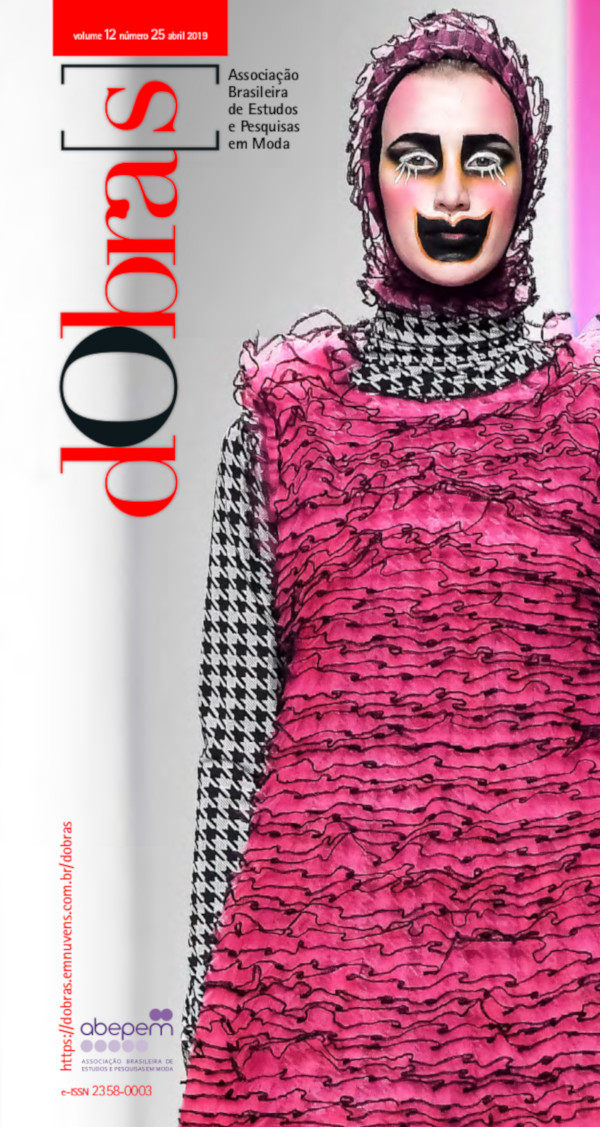Bearing the flesh and fleshing out the body. The use of drapery in Loie Fuller’s and Ola Maciejewska’s performances
DOI:
https://doi.org/10.26563/dobras.v11i25.852Keywords:
drape, serpentine dance, Loïe Fuller, Ola Maciejewska, clothing in performances.Abstract
What is the cause of body movement? Is it only physical? Is it pure will? In her performances, Ola Maciejewska slightly shifts the terms of these questions which particularly concern contemporary living arts. By adapting the use of a specific accessory – a large piece of fabric or drapery – strongly inspired by Loïe Fuller’s avant-garde serpentine dance, she questions the interactions between body and artifact, human and non-human. What if a non-human movement or strength could influence, work, even reinvent body’s potentialities? Thanks to drapery, Maciejewska overcomes the traditional dichotomy between the body usually associated with activity and the inert accessory, both to feel and to test the body’s limits. She suggests the essential hybridity of our body as well as the no less essential subversive function of what we bear or wear.
Downloads
References
BELLOW, Juliet. Au-delà du mouvement : Auguste Rodin et les danseurs de son temps. In: Rodin et la danse, cat. exp., Musée Rodin. Paris: Editions Hazan, 2018. p 41-51
COULON, Anne. Du maniaque à l’insouciance : la stratégie du costume chez les chorégraphes contemporains. 3 vol. Thèse sous la direction de Costin Miexfanu, Université Panthéon-Sorbonne, Paris, 2000.
DELEUZE, Gilles. Les intercesseurs. In: DELEUZE, Gilles. Pourparlers (1972-1990). Paris : Editions de Minuit, 1990. p. 165-184.
FRIED, Michael. Art and Objecthood. Essays and Reviews. Chicago : The University of Chicago Press, 1998.
FULLER, Loïe. Quinze ans de ma vie. Préface d’Anatole France. Paris : Librairie Félix Juven, 1908.
KLEE, Paul. Théorie de l’art moderne. Paris : Gallimard, 1985.
LISTA, Giovanni. Loïe Fuller : danseuse de la Belle époque. Paris: Librairie de la danse, Stock/Editions d’art Somogy, 1994.
LOÏE Fuller : danseuse de l’art nouveau. Nancy : Musée des beaux-arts, cat. exp., Paris : Editions de la RMN, 2002, 183p.
MACIEJEWSKA, Ola. Bombyx Mori, Festival les Inaccoutumés. Propos recueillis par Smaranda Olcèse. Inferno Magazine, 24 novembre 2015. Disponible en ligne : http://inferno-magazine.com/2015/11/24/entretien-ola-maciejewska-bombyx-mori-festival-les-inaccoutumes/. Consulté le 20 juillet 2018.
MACIEJEWSKA, Ola. L’appropriation comme stratégie de création est une notion intemporelle. Propos recueillis par Wilson le Personnic. MaCulture, 17 novembre 2016. Disponible en ligne : http://www.maculture.fr/entretiens/ola-maciejewska-loie-fuller/. Consulté le 20 juillet 2018.
NOVERRE, Jean-Georges. Lettres sur la danse et sur les ballets. Lyon : Aimé Delaroche imprimeurlibraire, 1760.
PINET, Hélène (dir.). Ornement de la durée : Loïe Fuller, Isadora Duncan, Ruth St. Denis, Adorée Villany. cat.exp. Paris : Musée Rodin, 1987.
PERRIER, Mélanie. Le corps. Dessine-moi la performance. Pour un schéma de la performance d’hier et d’aujourd’hui. In : DESPRES, Aurore (dir.). Gestes en éclats. Art, danse et performance. Dijon : Les presses du réel, 2016. p. 425-427.
REYNOLDS, Dee. The dancer as a woman : Loïe Fuller and Stéphane Mallarmé. In : HOBBS, Richard (dir.). Impressions of French modernity : art and literature in France, 1850-1900. New York : Manchester University Press, 1998. p.155-172.
Downloads
Published
How to Cite
Issue
Section
License
The copyrights of the works published in this journal belong to the author, and dObra[s] holds the rights of first publication. Due to their publication in this open access journal, any work here is free to use, with its own attributions, in educational and non-commercial applications.










